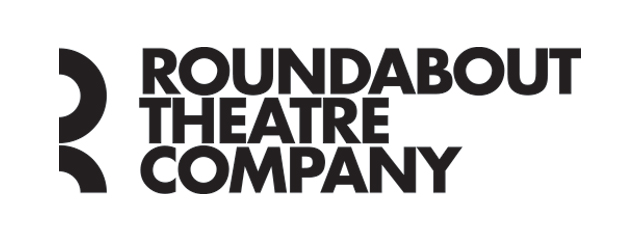The Psychology of Fairy Tales
James Lapine and Stephen Sondheim created Into the Woods, a story in which the lives of famous Brothers Grimm fairy-tale characters collide and intertwine. Read more about fairy tales and their characteristics below.
In the early nineteenth century, the Brothers Grimm and their imitators began to collect the oral folk and children's tales of their nations. The Grimms called these tales Wundermärchen, or wonder tales. Since that time, the folktales of almost every community on Earth have been written down. Surprisingly, a subset of these stories, those we call fairy tales, are similar across cultures. The same basic themes, characters, plots, and motifs recur in stories from Native American tribes, rural Chinese farming communities, and Iranian villages.
Fairy tale characteristics:
The core plot of the story is short and not detailed.
They are timeless and spaceless. They seem to have always existed. They happen "once upon a time"-somewhere without a specific time, place, or culture.
They feature combinations of familiar plots, images, and motifs.
They rely on archetypal characters such as good mothers, bad witches, and beautiful princesses and archetypal symbols such as gold, forests, towers, and thorns to evoke a visceral response in a listener.
They take place in a supernatural land of wonder, where natural physical laws are suspended.
They often have happy endings. Hope and goodness triumph over elements of darkness.
Why are the fairy tales of different nations and peoples so similar?
One school of thought holds that the stories have a single point of origin in Babylon, or India, from which they spread. The Chinese and French versions of Little Red Riding Hood, for example, share a common ancestor dating back 2,600 years.
Others conclude that fairy tales are a corrupted explanation of natural phenomena: the sun, the lunar cycle, the seasons, storms. The golden-haired hero triumphs over the forces of darkness, just as the sun triumphs over winter, and spring returns.
Another theory posits that these stories are degraded versions of myths, or remnants of religious beliefs or rituals. In this case, the trickster character common to so many fairy tales has his origins in the Ulysses of Greek mythology.
In the twentieth century, followers of famous psychologists Sigmund Freud and Carl Jungdeveloped new schools of thought about the origins and purposes of fairy tales.
In 1976, Austrian-American child psychologist Bruno Bettelheimpublished a book outlining a Freudian approach to fairy tales, The Uses of Enchantment: The Meaning and Importance of Fairy Tales. (Since his death in 1990, Bettelheim's academic credentials, theories about autism, and treatment methods have come under scrutiny and in some cases been completely discredited. His analysis of the psychological function of fairy tales remains a coherent approach to the topic.) In The Uses of Enchantment, Bettelheim makes the case that fairy tales use symbolism to present essential existential dilemmas-the fear of growing up, desire to live forever, fear that one is alone-in a way that a child can understand. The detail-free stories help children learn to cope with their own "primitive drives" and "violent emotions" and assures them that, like fairy tale heroes, they can overcome obstacles. In Bettelheim's view, fairy tales guide children through the process of healthy human development, teaching them to go out into the world independent of their parents, find themselves, find their partner, and live "happily ever after," knowing that by "forming a true interpersonal relation" they can live a fulfilled life.
The popularity of The Uses of Enchantment led many to conclude that it was a source for Into the Woods. But, asStephen Sondheim explains, "[Lapine] was drawn not to Bettelheim's Freudian approach but to Carl Jung's theory that fairy tales are an indication of the collective unconscious."
The collective unconscious, according to Jung, is a shared part of the unconscious mind, made up of primordial images or archetypes from which innate human drives emerge. It's how the "structure of the soul spontaneously and independently organizes experiences." All human beings have access to this collective unconscious, and it influences human behavior on instinctive, ethical, moral, and cultural levels.
Jung wrote, "The collective unconscious - so far as we can say anything about it at all - appears to consist of mythological motifs or primordial images, for which reason the myths of all nations are its real exponents. In fact, the whole of mythology could be taken as a sort of projection of the collective unconscious... "
Marie-Louise von Franz, a Jungian psychoanalyst, wrote of the value fairy tales hold for understanding the collective unconscious. Unlike myths, fairy tales are not layered with cultural, national, or religious meaning. "Fairy tales are the purest and simplest expression of collective unconscious psychic processes...Every fairy tale is a relatively closed system compounding one essential psychological meaning which is expressed in a series of symbolic pictures and events and is discoverable in these." Each symbol is connected not only to a thought pattern but to an emotional experience.
In this view, the traditional fairy tale characters of Into the Woods emerge from the collective unconscious. They express a universal human journey: from the known and safe into the unknown in pursuit of their heart's desire. So, too, do the characters invented by James Lapine, the Baker and the Baker's Wife. Sondheim writes that that they are "at heart a contemporary urban American couple," but their quest has a universal resonance. Lapine and Sondheim are the conduit through which these characters and their associated archetypes have emerged from the collective unconscious.
Into the Woods is now playing at the Laura Pels Theatre through April 12. For more information and tickets, please visit our website.
Videos


